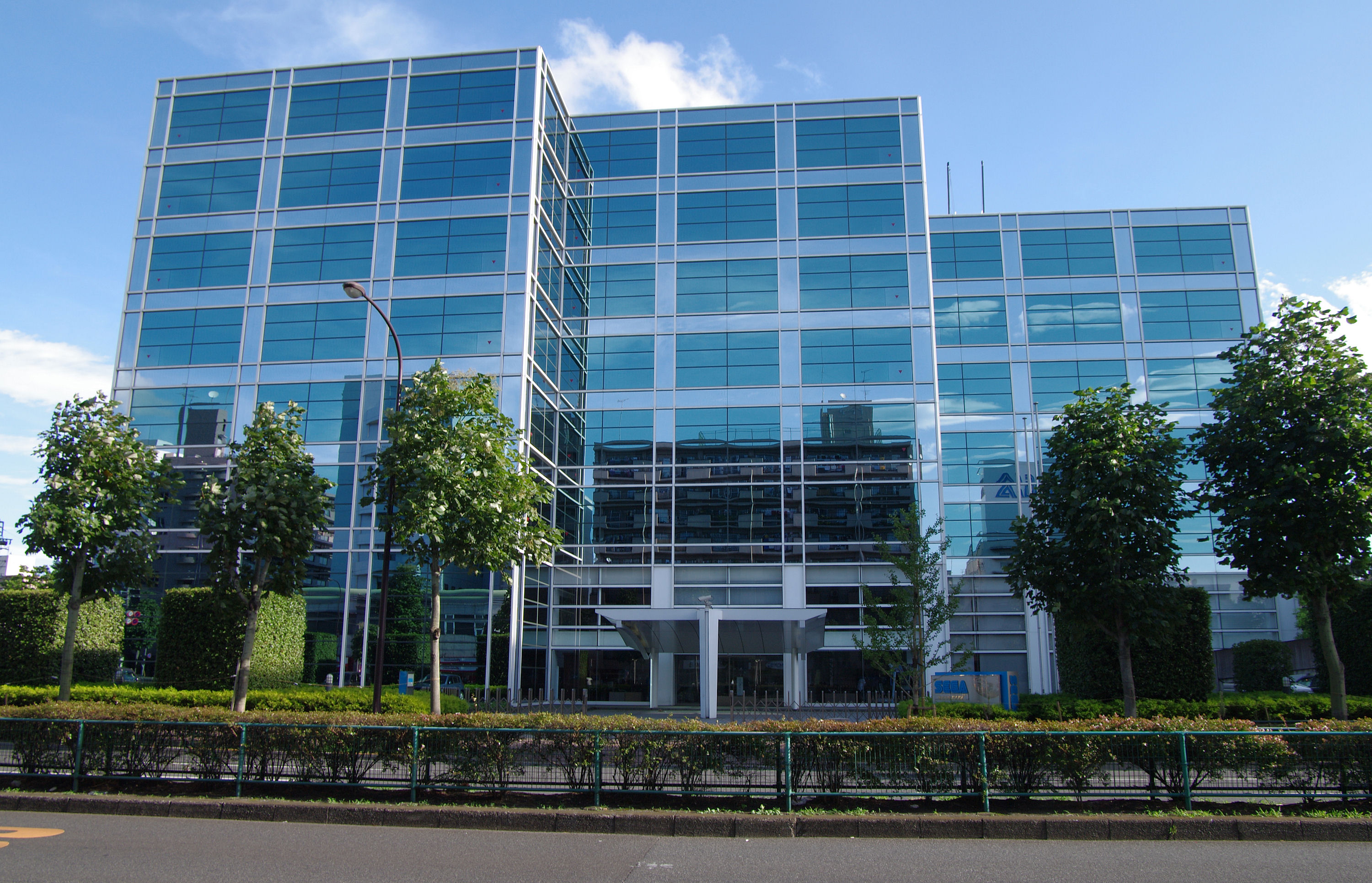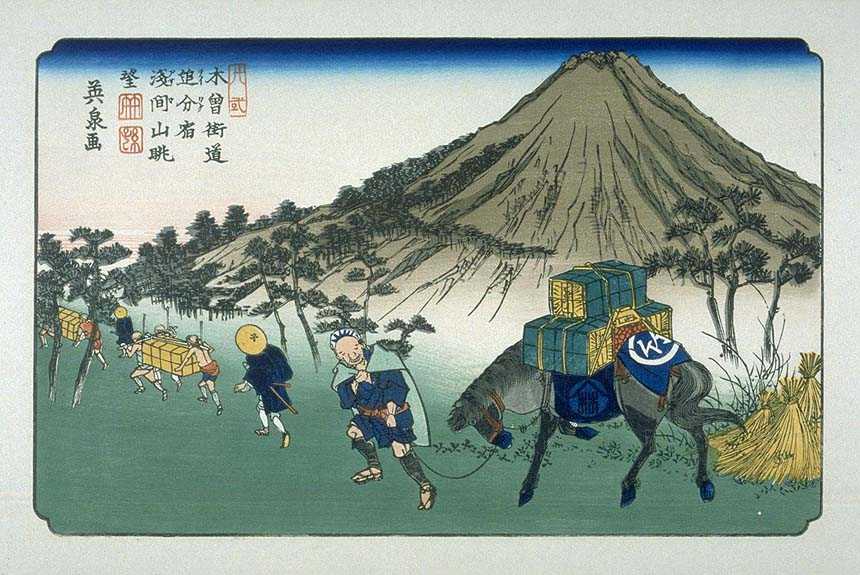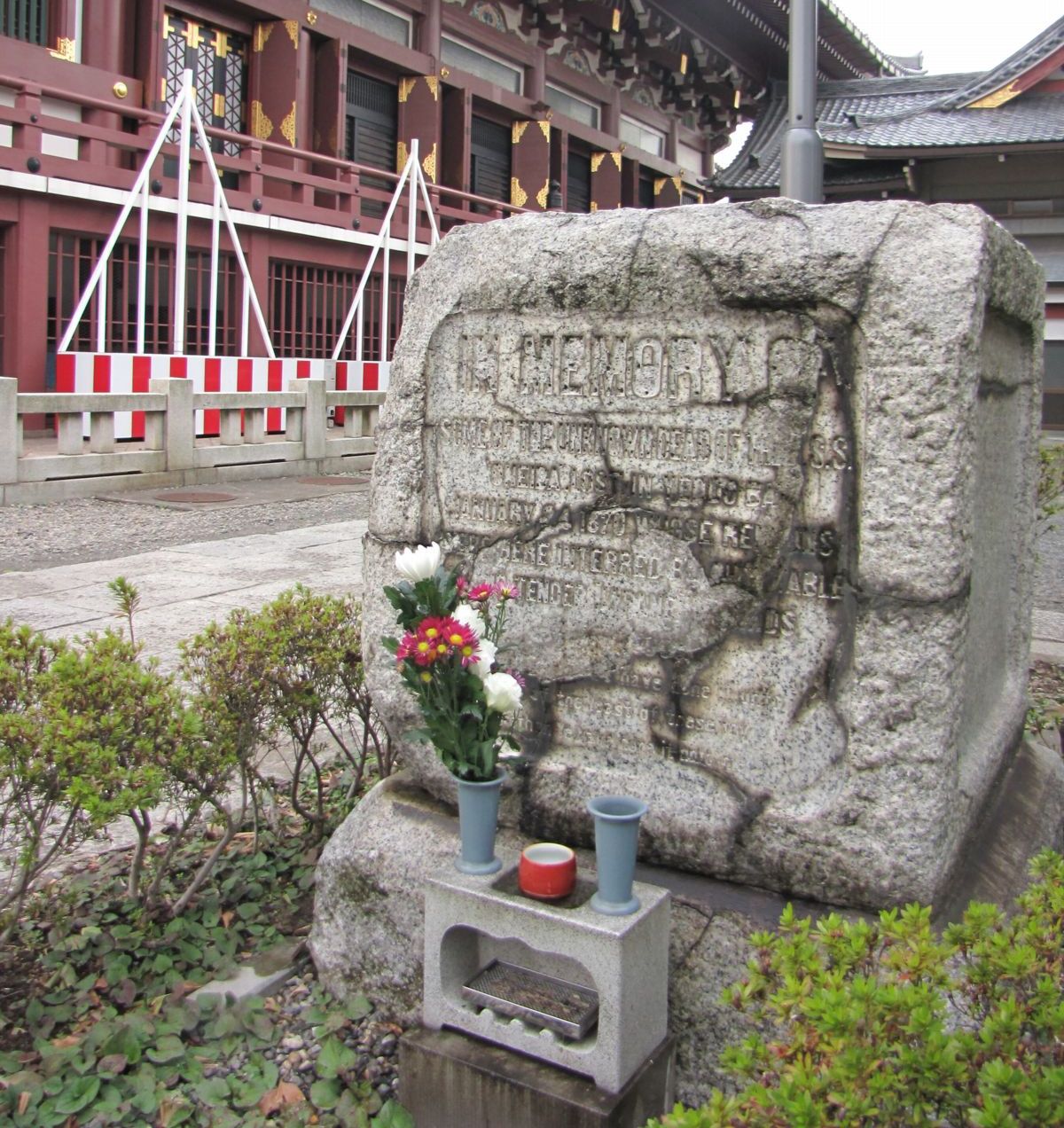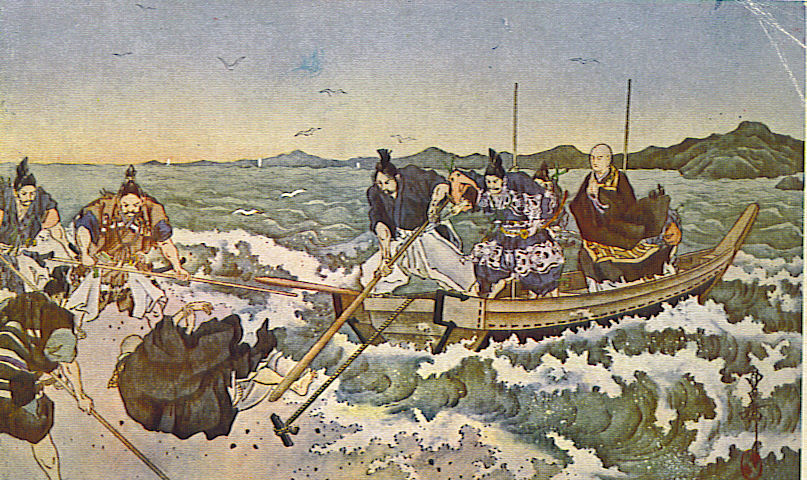|
Ikegami Honmon-ji
is a temple of the Nichiren Shū south of Tokyo, erected where Nichiren is said to have died. A short walk from Ikegami Station ( Tōkyū Ikegami Line) or Nishi-Magome Station (Toei Asakusa Line), Ikegami Honmon-ji contains a number of buildings, most of which have been reconstructed since the bombing of 15 March 1945. They include the Important Cultural Property designated five-storey pagoda built in 1608, the ''kyōzō'' (, repository of religious writings) built in 1784, and the ''hōtō'' (), built in 1781 where Nichiren was cremated. Other buildings have been rebuilt, or newly constructed, since 1945. Now in Ōta-ku, suburban Tokyo, Ikegami Honmon-ji was at some distance from the city until the mid-20th century. Basil Hall Chamberlain and W. B. Mason wrote of it in 1907: "Its fine situation and magnificent timber make it one of the most attractive points within easy reach of Tōkyō."Basil Hall Chamberlain and W. B. Mason, ''A Handbook for Travellers in Japan,'' 8 ... [...More Info...] [...Related Items...] OR: [Wikipedia] [Google] [Baidu] |
Nichiren Buddhism
Nichiren Buddhism (), also known as ''Hokkeshū'' (, meaning ''Lotus Sect''), is a branch of Mahayana Buddhism based on the teachings of the 13th-century Japanese Buddhist priest Nichiren (1222–1282) and is one of the Kamakura period schools. Its teachings derive from some 300–400 extant letters and treatises either authored by or attributed to Nichiren. Nichiren Buddhism generally sources its basic doctrine from the Lotus Sutra claiming that all sentient beings possess an internal Buddha-nature capable of attaining Buddhahood in the current life. There are three essential aspects to Nichiren Buddhism: # The faith in Nichiren's '' Gohonzon'' # The chanting of '' Nam Myoho Renge Kyo'' with varying recitations of the Lotus Sutra # The study of Nichiren's scriptural writings, called ''Gosho'' After his death, Nichiren left to both his senior disciples and lay followers the mandate to widely propagate the ''Gohonzon'' and chanting the '' Daimoku'' in order to secure the p ... [...More Info...] [...Related Items...] OR: [Wikipedia] [Google] [Baidu] |
Ōta, Tokyo
is a Special wards of Tokyo, special ward in the Tokyo, Tokyo Metropolis in Japan. The ward refers to itself in English as Ōta City. It was formed in 1947 as a merger of Ōmori, Ōta, Tokyo, Ōmori and Kamata, Ōta, Tokyo, Kamata following Tokyo City's Local Autonomy Act, transformation into Tokyo Metropolis. The southernmost of the 23 special wards, Ōta borders the special wards of Shinagawa, Tokyo, Shinagawa, Meguro, Tokyo, Meguro and Setagaya, Tokyo, Setagaya to the north, and Kōtō, Tokyo, Kōtō to the east. Across the Tama River in Kanagawa Prefecture is the city of Kawasaki, Kanagawa, Kawasaki, forming the boundaries to the south and west. Ōta is the largest special ward in Tokyo by area, spanning 59.46 square kilometres (22.96 sq mi). As of 2024, the ward has an estimated population of 744,849, making it the third largest special ward by population, with a population density of 12,041 inhabitants per square kilometre (31,190/sq mi). Notable neighborhoods and districts ... [...More Info...] [...Related Items...] OR: [Wikipedia] [Google] [Baidu] |
Nichiren-shū Temples
is a combination of several schools ranging from four of the original Nichiren Buddhist schools that date back to Nichiren's original disciples, and part of the fifth: Overview The school is often referred to as the Minobu Sect due to its prominence within the Mount Minobu area. The school's head temple, Kuon-ji, is located on Mount Minobu where Nichiren lived in seclusion and where he asked to be buried. Another significant temple of the sect is the Ikegami Honmon-ji where Nichiren died. Accordingly, many of Nichiren's most important personal artifacts and writings, also considered to be National Treasures of Japan, are within their safekeeping. The sect is also known for its more open and tolerant views of other Buddhist traditions, even mixing or incorporating various mixed Buddhist beliefs and Shinto practices into their own aesthetics, most notably the use of various religious statues, the red stamping practice of Shuin for novelty, esoteric combinations of Buddhist f ... [...More Info...] [...Related Items...] OR: [Wikipedia] [Google] [Baidu] |
Buddhist Temples In Tokyo
Buddhism, also known as Buddhadharma and Dharmavinaya, is an Indian religion and philosophical tradition based on teachings attributed to the Buddha, a wandering teacher who lived in the 6th or 5th century BCE. It is the world's fourth-largest religion, with about 500 million followers, known as Buddhists, who comprise four percent of the global population. It arose in the eastern Gangetic plain as a movement in the 5th century BCE, and gradually spread throughout much of Asia. Buddhism has subsequently played a major role in Asian culture and spirituality, eventually spreading to the West in the 20th century. According to tradition, the Buddha instructed his followers in a path of development which leads to awakening and full liberation from '' dukkha'' (). He regarded this path as a Middle Way between extremes such as asceticism or sensual indulgence. Teaching that ''dukkha'' arises alongside attachment or clinging, the Buddha advised meditation practices and eth ... [...More Info...] [...Related Items...] OR: [Wikipedia] [Google] [Baidu] |
The Internet Archive
The Internet Archive is an American 501(c)(3) organization, non-profit organization founded in 1996 by Brewster Kahle that runs a digital library website, archive.org. It provides free access to collections of digitized media including websites, Application software, software applications, music, audiovisual, and print materials. The Archive also advocates a Information wants to be free, free and open Internet. Its mission is committing to provide "universal access to all knowledge". The Internet Archive allows the public to upload and download digital material to its data cluster, but the bulk of its data is collected automatically by its web crawlers, which work to preserve as much of the public web as possible. Its web archiving, web archive, the Wayback Machine, contains hundreds of billions of web captures. The Archive also oversees numerous Internet Archive#Book collections, book digitization projects, collectively one of the world's largest book digitization efforts. ... [...More Info...] [...Related Items...] OR: [Wikipedia] [Google] [Baidu] |
Hiroshige
or , born Andō Tokutarō (; 1797 – 12 October 1858), was a Japanese ''ukiyo-e'' artist, considered the last great master of that tradition. Hiroshige is best known for his horizontal-format landscape series '' The Fifty-three Stations of the Tōkaidō'' and for his vertical-format landscape series '' One Hundred Famous Views of Edo''. The subjects of his work were atypical of the ''ukiyo-e'' genre, whose typical focus was on beautiful women, popular actors, and other scenes of the urban pleasure districts of Japan's Edo period (1603–1868). The popular series '' Thirty-six Views of Mount Fuji'' by Hokusai was a strong influence on Hiroshige's choice of subject, though Hiroshige's approach was more poetic and ambient than Hokusai's bolder, more formal prints. Subtle use of color was essential in Hiroshige's prints, often printed with multiple impressions in the same area and with extensive use of '' bokashi'' (color gradation), both of which were rather labor-intensive ... [...More Info...] [...Related Items...] OR: [Wikipedia] [Google] [Baidu] |
Yokohama
is the List of cities in Japan, second-largest city in Japan by population as well as by area, and the country's most populous Municipalities of Japan, municipality. It is the capital and most populous city in Kanagawa Prefecture, with a population of 3.7 million in 2023. It lies on Tokyo Bay, south of Tokyo, in the Kantō region of the main island of Honshu. Yokohama is also the major economic, cultural, and commercial hub of the Greater Tokyo Area along the Keihin region, Keihin Industrial Zone. Yokohama was one of the cities to open for trade with the Western world, West following the 1859 end of the Sakoku, policy of seclusion and has since been known as a cosmopolitan port city, after Kobe opened in 1853. Yokohama is the home of many Japan's firsts in the Meiji (era), Meiji period, including the first foreign trading port and Chinatown (1859), European-style sport venues (1860s), English-language newspaper (1861), confectionery and beer manufacturing (1865), daily newspap ... [...More Info...] [...Related Items...] OR: [Wikipedia] [Google] [Baidu] |
USS Oneida (1861)
The second USS ''Oneida'' was a ''Mohican''-class screw sloop-of-war in the United States Navy. During the Civil War, she destroyed the CSS ''Governor Moore'' and served in blockade operations. She was attached to the Asiatic Squadron from 1867–1870. She sank in 1870 outside Yokohama, Japan after collision with the British steamer ''Bombay''. A court of inquiry, headed by the local British consul, found the officers of ''Oneida'' were responsible for the collision, with ''Bombay's'' captain being blamed for not staying at the scene to render assistance – a decision that caused some controversy.''The Morning Post'', 5 July 1870, page 5, column 1 A less exhaustive U.S. naval court of inquiry laid the blame entirely on the ''Bombays actions. Japanese fishing boats saved 61 sailors but 125 men lost their lives. The American government made no attempt to raise the wreck and sold it to a Japanese wrecking company. The company recovered many bones from the wreck and interred them ... [...More Info...] [...Related Items...] OR: [Wikipedia] [Google] [Baidu] |
Matoi
A was a flag used in Edo period Japan by hikeshi firemen to notify people of a fire near or within a building. It was taken up on a roof near the burning building by the and waved to draw the attention of other groups of firefighters, who would then hurry to the site of the fire to assist. Each different group of firemen in the Edo period had their own to identify themselves.In modern Japan, the is only used for Ceremony, ceremonial purposes, for example on New Year's firefighter event, . The ''Fire Museum'' (消防博物館 東京消防庁消防防災資料センター) of the Tokyo Fire Department has a large collection of replica matoi. References Bibliography Japan Hikeshi (Firemen) Preserving Foundation Flags of Japan Edo period History of firefighting Firefighting in Japan Japanese words and phrases {{Japan-hist-stub ... [...More Info...] [...Related Items...] OR: [Wikipedia] [Google] [Baidu] |
Basil Hall Chamberlain
Basil Hall Chamberlain (18 October 1850 – 15 February 1935) was a British academic and Japanologist. He was a professor of the Japanese language at Tokyo Imperial University and one of the foremost British Japanologists active in Japan during the late 19th century. (Others included Ernest Satow and W. G. Aston.) He also wrote some of the earliest translations of haiku into English. He is perhaps best remembered for his informal and popular one-volume encyclopedia ''Things Japanese'', which first appeared in 1890 and which he revised several times thereafter. His interests were diverse, and his works include an anthology of poetry in French. Early life Chamberlain was born in Southsea (a part of Portsmouth) on the south coast of England, the son of an Admiral William Charles Chamberlain and his wife Eliza Hall, the daughter of the travel writer Basil Hall. His younger brother was Houston Stewart Chamberlain. He was brought up speaking French as well as English, even ... [...More Info...] [...Related Items...] OR: [Wikipedia] [Google] [Baidu] |
Kyōzō
in Japanese Buddhist architecture is a repository for sūtras and chronicles of the temple history. It is also called , , or . In ancient times the ''kyōzō'' was placed opposite the shōrō, belfry on the east–west axis of the temple. The earliest extant ''kyōzō'' is at Hōryū-ji, and it is a two-storied structure. An example of one-storied ''kyōzō'' is at Tōshōdai-ji in Nara, Nara, Nara. A ''kyōzō's'' usual size is 3 x 3 ken (architecture), ''ken''. All storage buildings are equipped with shelving to store the containers that hold the rolled sūtras. Some temples have circular revolving shelves for sūtra storage: a central pillar revolves, like a vertical axle, and octahedral tubes are attached to it. A revolving sūtra storage case is called . Revolving shelves are convenient because they allow priests and monks to select the needed sūtra quickly. Eventually, in some ''kyōzō'' the faithful were permitted to push the shelves around the pillar while praying—it ... [...More Info...] [...Related Items...] OR: [Wikipedia] [Google] [Baidu] |
Nichiren Shū
was a Buddhism in Japan, Japanese Buddhist priest and philosopher of the Kamakura period. His teachings form the basis of Nichiren Buddhism, a unique branch of Japanese Mahayana, Mahayana Buddhism based on the ''Lotus Sutra''. Nichiren declared that the ''Lotus Sutra'' alone contains the highest truth of Buddhism and that it is the only sutra suited for the Decline of the Dharma, Age of Dharma Decline. He insisted that the Emperor of Japan, sovereign of Japan and its people should support only this form of Buddhism and eradicate all others, or they would face social collapse and environmental disasters. Nichiren advocated the faithful recitation of the title of the ''Lotus Sutra'', ''Namu Myōhō Renge Kyō'', as the only effective path to Buddhahood in this very life, a path which he saw as accessible to all people regardless of class, education or ability. Nichiren held that The Buddha, Shakyamuni and all other Buddhist deities were manifestations of the Adi-Buddha, Original ... [...More Info...] [...Related Items...] OR: [Wikipedia] [Google] [Baidu] |








